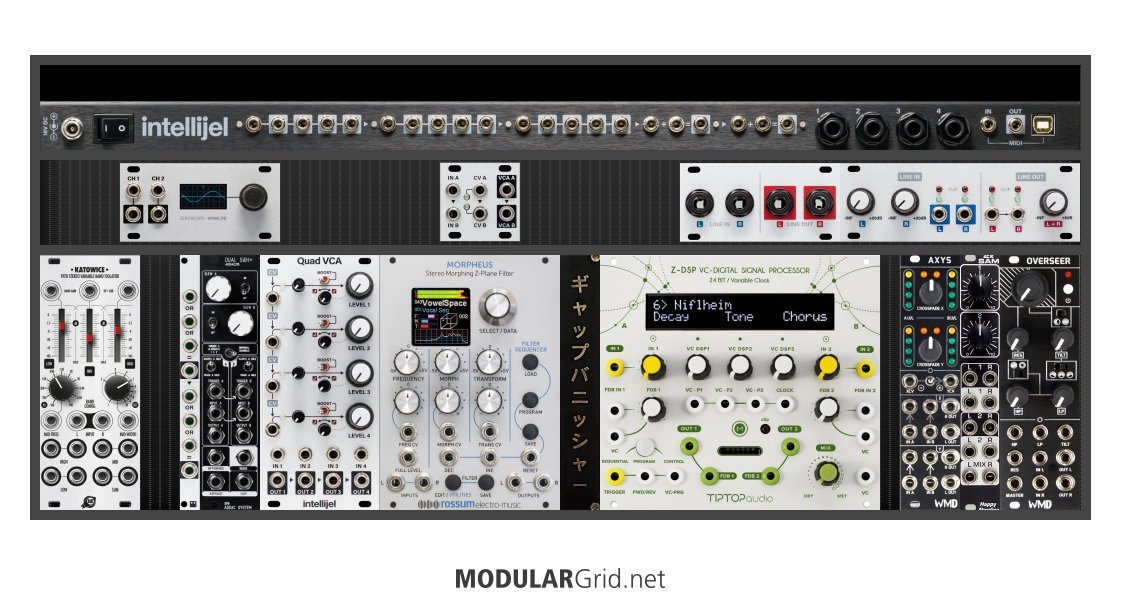@singular_sound
Hey man, it's been over a year of you posting on this forum and the trajectory is always this:
You post maximalist fantasy racks that you designed with no experience whatsoever, referencing JunkieXL and other creators with huge setups (who 1.) were most likely professional musicians/producers with years or decades of experience before they dove into Eurorack and 2.) started with smaller, self-contained setups or respected the well-documented best practices that veteran users of this forum always point to). You accompany the rack with an unstructured blurb about how conceptual and deep the setup would be and ask for feedback.
First issue: You are specifically prompting users to imagine how it would feel playing your setup. When they tell you it wouldn't feel good to them personally because it lacks basic elements of a modular, such as utilities, and has way too many voices to manage, you reply that it totally makes sense in your head and that your concepts is great, actually. Case in point in this particular thread: unsynced discrete clock sources for different drum modules and mixing via "patch throughs" (I assume you mean stackable cables?). That may sound radical and idiosyncratic to you, but anyone who tried commiting their music to hard drive will tell you that it blows because it takes all the control of a sophisticated audio setup away from you.
When users analyze your systems, they invest a lot of time and effort. You provide little information about signal flow, voice allocation, solutions for interfacing with your other studio gear, etc., so they are essentially flying blind and try to read the tea leaves of your megastructure concepts.
Second issue: The users that are kind enough to respond and make suggestions for manageable, scope-limited setups that might fit your desires, you bombard with replies without engaging with their arguments beyond "Noted, but I like my idea better". You then post more thrown-together rack designs and come across as combative by commenting along the lines of "I made this one just for you, user XYZ". That reads as so massively disingenuous and facetious that the thread often goes cold after that. You swear that you don't start arguments and feel wrongly antagonized, but I stg THIS is why no one wants to engage with you more than once.
You are an avid user of AI chatbots and would like that functionality to be added to this website. Until then you treat the other users as if they were an AI agent. You're all take, no give. You expect to be engaged with, to have your scatter-brained ideas be discussed seriously, but you don't make the cognitive effort to respond in a structured and respectful manner to well-meaning comments. You build modular cloud castles in manic bursts of unchanneled creativity, but never have to reconcile your grand ideas with the financial and technical reality of purchasing and using one.
Third and final issue: There has been zero improvement or progress on your part. Your first post in May of 2024 reflected how almost every newcomer approaches Eurorack setups: A mega powerful, but ultimately impractical machine that does everything. That's absolutely excusable - I was mesmerized by the seemingly infinite possibilities of modular in the beginning, too. I theory-crafted wall-spanning racks with the most esoteric and stimulating sound sources. But over a year later and after many paragraphs dedicated to teaching you the basics of modular design, you still post the same kind of setup and you post in the same solipsistic manner - "edits" to previous posts contain the entire previous post, making the thread virtually unreadable, you ask other users if /cobbled-together rack or addition XYZ/ makes them happy, your "peace" shtick - the list of grievances I have with your style is long. Mostly, it displays a contempt for the opinion and expertise of others. You don't want a forum to engage with respectfully and on equal footing, you want an audience of adoring and always approving sycophants.
You will not find that here. Make good on your promise and leave.

